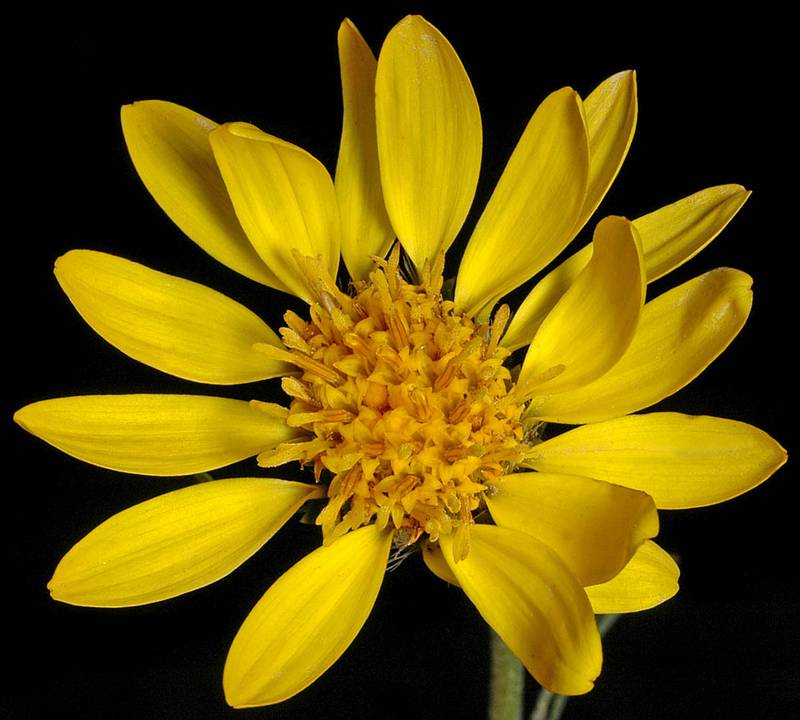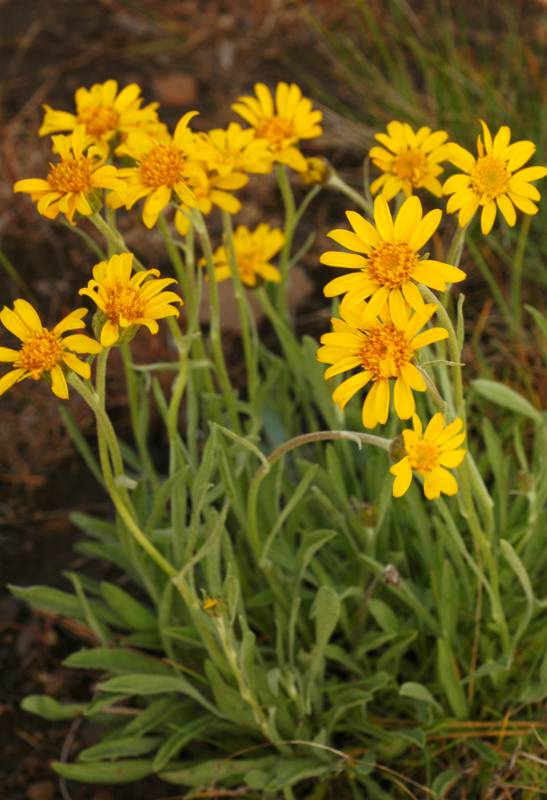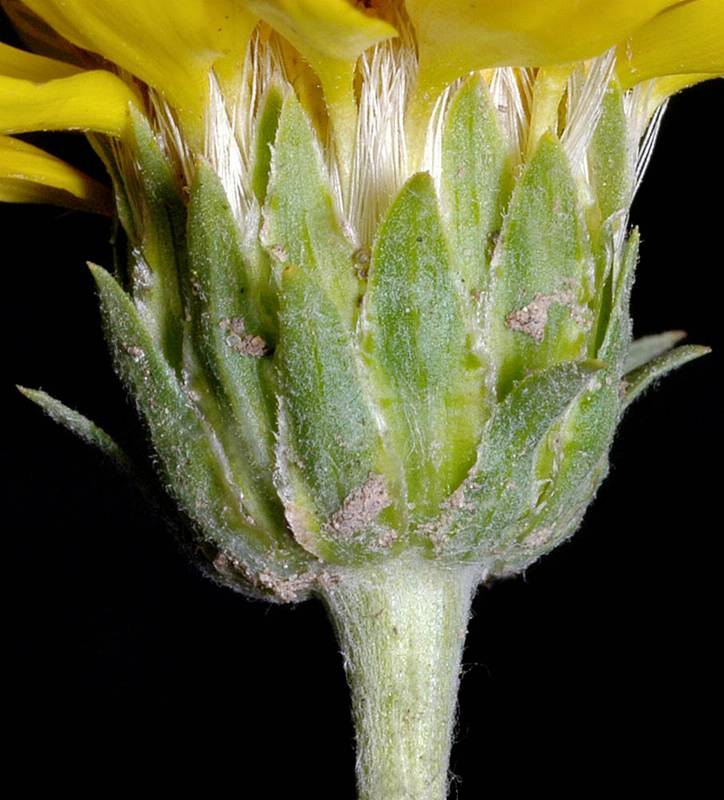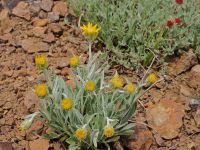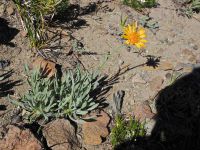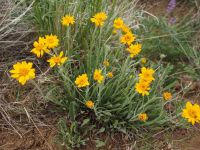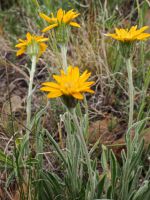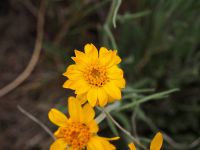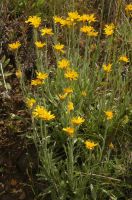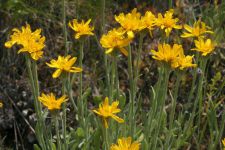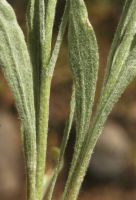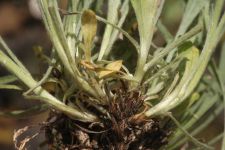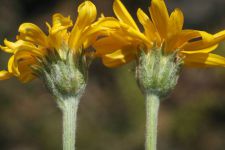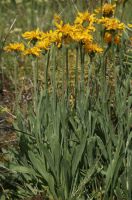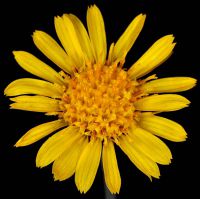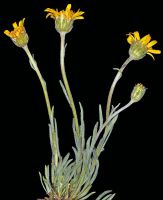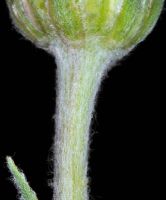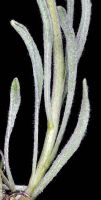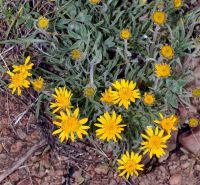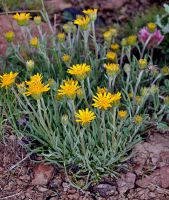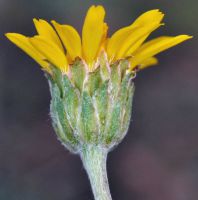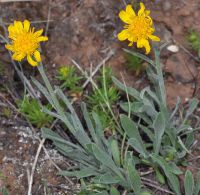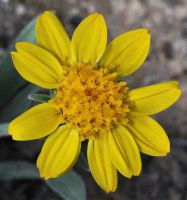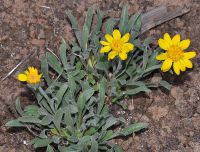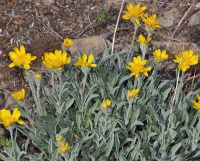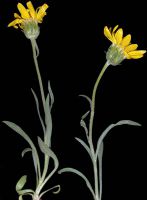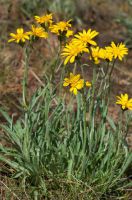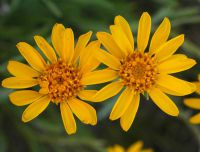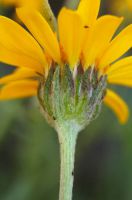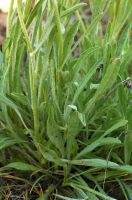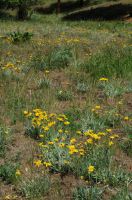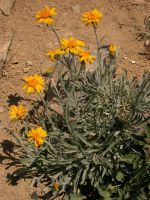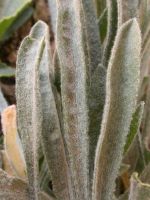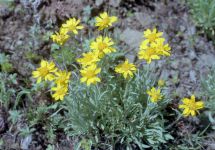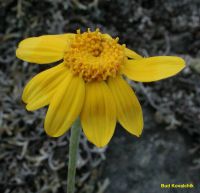Distribution: Occurring east of the Cascades crest in Washington; Washington to California, east to Idaho, Montana, and Nevada.
Habitat: Open, dry, often rocky places, from sagebrush desert to ponderosa pine forest openings at middle elevations in the mountains.
Flowers: May-July
Origin: Native
Growth Duration: Perennial
Conservation Status: Not of concern
Pollination: Bees, flies, beetles, wasps
Densely tufted herbaceous perennial from fibrous roots, the stems 6-24 cm. tall; herbage usually white-woolly.
Leaves alternate, oblanceolate, erect, entire, soft, 3-10 cm. long and 2-7 mm. wide, crowded at the ends of numerous, short branches.
Flowering stems numerous, each with a single head; involucre 6-12 mm. high, its bracts nearly equal; rays 7-20, yellow, 8-12 mm. long; disk flowers yellow; pappus of capillary bristles.
Achene elongate.
Publication: Erythea. 2: 72. 1894.
Nestotus lanuginosus (A.Gray) G.L.Nesom
-
var. lanuginosus
 Occurring east of the Cascades crest in Washington; Washington to California, east to Idaho, Montana, and Nevada.
Occurring east of the Cascades crest in Washington; Washington to California, east to Idaho, Montana, and Nevada.
PNW Herbaria: Specimen records of Stenotus lanuginosus in the Consortium of Pacific Northwest Herbaria database
WA Flora Checklist: Stenotus lanuginosus checklist entry
OregonFlora: Stenotus lanuginosus information
E-Flora BC: Stenotus lanuginosus atlas page
CalPhotos: Stenotus lanuginosus photos

